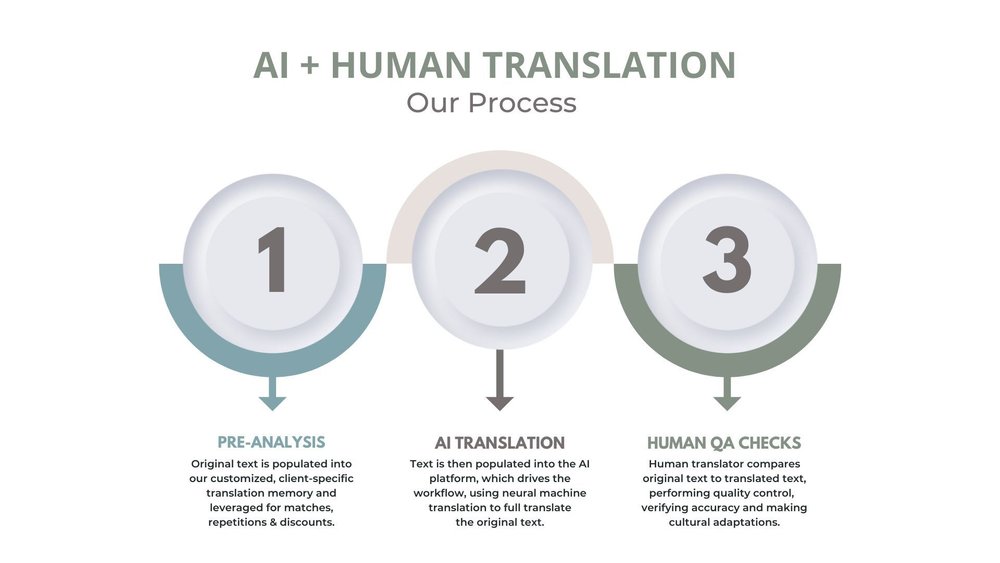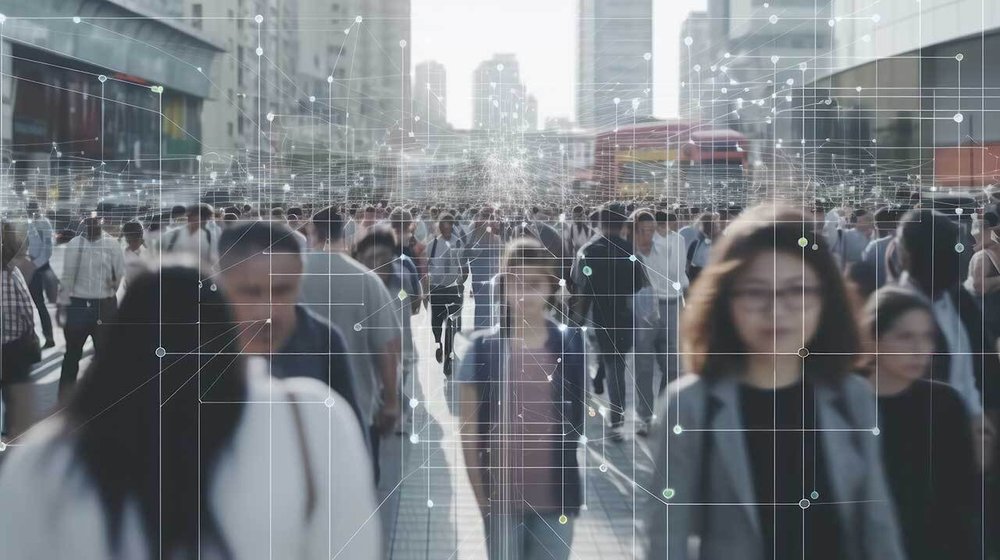
The Rise of Artificial Intelligence and The Future of Translation
Across all walks of life, people are talking about artificial intelligence (AI) and what it means for our future. Tools like Google Translate and ChatGPT are changing the way we work, communicate and interact with each other at a mind-blowing speed. It’s helping to automate our lives, giving us more leverage and flexibility in how we use our time. And now it’s revolutionizing the world of translation.
Human translation has a long history that should be honored. Without translators, our lives would look dramatically different. Some of the most significant translations in history include:
Religious texts: The translation of religious texts, for example by Saint Jerome and Salman the Persian, had a profound impact on religious, cultural, and linguistic history. It made religious texts accessible to a wider audience, shaping religious beliefs and influencing literature, language development, and societal norms.
The translation of ancient Greek texts: The translation of ancient Greek texts, particularly during the Renaissance, was responsible for reviving classical knowledge and ideas. Translations of works by philosophers like Plato and Aristotle, as well as scientific and mathematical texts, sparked a revolution in learning, leading to advancements across a wide variety of fields and laying the foundation for modern Western thought.
The translation of scientific works: The translation of scientific works, especially during the Islamic Golden Age, played a pivotal role in preserving and transmitting ancient Greek, Persian, and Indian scientific knowledge to the Western world. Translations of works in mathematics, astronomy, medicine, as well as other disciplines, greatly influenced the development of scientific thought and paved the way for scientific progress during the Renaissance and beyond.
The translation of literary masterpieces: Translations of literary masterpieces have had a profound impact on literature and cultural exchange. Works like Miguel de Cervantes' "Don Quixote," translated into numerous languages, introduced readers worldwide to a seminal piece of Spanish literature. Similarly, translations of literary classics like Homer's "Iliad" or the plays of William Shakespeare have allowed these timeless works to transcend linguistic boundaries and captivate audiences across the globe.
The Universal Declaration of Human Rights: The translation of the Universal Declaration of Human Rights, adopted by the United Nations in 1948 into multiple languages, was instrumental in promoting human rights and establishing a global standard of dignity and equality. Translations of this document ensured its accessibility and helped to spread its principles worldwide, shaping international law, policies, and the protection of human rights across diverse cultures and societies.
While human translators have contributed immensely to the development of modern society, the speed at which we communicate today often makes it impossible for businesses to keep pace with their globalization efforts. Creating enough new content in real time in every language of operation is a colossal task. Similarly, services and products have to be marketed across the globe, making the task at hand quite overwhelming. That’s where AI comes in.
The Benefits of AI
Artificial intelligence offers significant perks for businesses looking to efficiently translate large volumes of content at a fast pace. Here are some ways AI can help you become more efficient and effective in communicating your global message:
Speed and scalability: AI-powered translation tools can process large volumes of content at lightning speeds. With AI, businesses can automate the translation process, reducing turnaround times and enabling quick dissemination of information across multiple platforms. AI's scalability allows businesses to handle increasing translation demands without incurring significant costs.
Cost efficiency: AI translation solutions can significantly cut translation costs compared to traditional human-only approaches. By automating the translation process, businesses can save on the expense of hiring human translators for every translation task. AI-powered tools also eliminate the need for extensive project management and manual coordination, further reducing overhead costs.
Consistency and terminology management: AI translation tools ensure consistency in all translated content, maintaining a unified brand voice and terminology across various languages. By leveraging machine learning algorithms, AI systems can learn from existing translations, glossaries, and style guides, ensuring accuracy and consistency in terminology usage. This consistency enhances brand identity and helps businesses maintain a cohesive message across their multilingual content.
Machine translation with human post-editing: AI can provide a valuable starting point for translations through machine translation (MT) systems. While MT may not capture the nuances of human language perfectly, it can significantly speed up the initial process. Businesses can then employ human post-editors to refine and enhance the MT output, ensuring high-quality, contextually accurate translations that align with specific industry jargon, cultural sensitivities, and specific target audiences.
Continuous improvement through neural networks: AI translation systems based on neural networks continually learn and improve their translation capabilities over time. As these systems process more data and receive human feedback, they refine their algorithms, leading to enhanced translation accuracy and fluency. This continuous improvement empowers businesses to achieve higher-quality translations and adapt to evolving language nuances and industry-specific requirements.
So what’s the catch? While AI is a powerful tool for translation, it's important to note that human involvement is still crucial, especially for texts that are cultural sensitive, require creative adaptation, or are highly complex in their linguistic structure. That’s why combining the strengths of AI with translators who use an AI-assisted workflow + human post-editing process ensures the best balance of efficiency, accuracy, and linguistic finesse needed in today’s fast-paced world.

What Types of Text are Not Suited to AI?
There are certain types of content that are not well-suited for machine translation alone, including:
Creative writing and literature: Content that involves artistic expression, literary works, or creative writing often relies on wordplay, cultural references, metaphors, and subtle nuances that may not be accurately captured by machine translation. Preserving the literary quality and emotional impact of such content typically requires the expertise and creative interpretation of human translators.
Legal and technical documents: These types of documents often contain complex terminology, specific legal conventions, or technical jargon. Accuracy, precision, and adherence to legal or industry standards are crucial in these contexts. Machine translation may struggle to handle these specialized domains effectively, as it may not fully understand the legal or technical implications, potentially leading to errors or misinterpretations. Human translators with expertise in these fields are essential for precise and contextually accurate translations.
Marketing and advertising copy: Marketing materials, advertising slogans, and brand messaging rely heavily on cultural context, creativity, and persuasion. Translating such content requires a deep understanding of cultural nuances, local market trends, and the ability to adapt the message to resonate with the target audience. Machine translation may struggle to capture the intended impact, tone, and cultural references that play a crucial role in successful marketing and advertising campaigns.
Poetry and lyrics: The beauty and intricacy of poetic language, rhythm, meter, and rhyming schemes pose significant challenges for machine translation. The aesthetic and emotional aspects of poetry and lyrics often depend on the precise choice of words, their order, and their sounds. The nuances and artistic expressions in these forms of content are better conveyed through the artistry of human translators.
Highly sensitive or confidential information: Content that contains highly sensitive, confidential, or proprietary information should be carefully handled. Relying solely on machine translation for such content may pose security risks or potential data breaches. Human translators can ensure confidentiality and handle sensitive information appropriately while providing accurate translations.
While machine translation can be a valuable tool for many types of content, the expertise, cultural understanding, and adaptability of human translators are essential aspects to consider in certain domains that require a high degree of accuracy, creativity, cultural sensitivity, or specialized knowledge. A hybrid approach that combines the strengths of both machine translation and human expertise is often the best solution for achieving optimal translation quality in these cases. Wondering whether your content is suited to AI? Book a free consultation call with me here to find out if it’s the right option for you.


AI Translation + Human Translation
While AI translation has made significant strides, it still falls short when it comes to capturing the nuances of human expression and cultural context. Yet human translation, the perfect solution for communicating cultural nuances and double meanings, can be time-consuming and expensive. So what if you could harness the best of both worlds?
The Ultimate Solution: AI + Human Translation
Our groundbreaking approach combines the speed and efficiency of AI translation with the expertise, precision and flexibility of human translators. Leveraging the latest advancements in artificial intelligence, our platform creates a strong foundation by translating your text quickly and accurately. But we don't stop there. To ensure that the final result is flawless and tailored to your audience, our team of experienced human translators meticulously review and refine the AI-generated text, considering cultural nuances, idiomatic expressions, and context-specific knowledge.
The Advantages are Endless
Unparalleled accuracy: Enjoy the precision of AI translation combined with the safety net of human post-editing, resulting in translations that are remarkably on target, contextually accurate, and tailored to your brand voice.
Cultural sensitivity: Our expert human translators ensure that your content is localized to resonate perfectly with your target audience, avoiding any cultural missteps.
Speed and efficiency: Harness the speed and efficiency of AI translation to accelerate your initial translation process. Then, let our skilled human translators work their magic to refine the final text, ensuring a quick turnaround without compromising on quality.
Consistency and cohesion: By combining AI and human translation, we create a perfect package that guarantees consistent terminology, tone, and style across your content, whether it's a website, a book, marketing materials or clinical trials.
Reduced costs: Our hybrid approach optimizes cost by leveraging the efficiency of AI translation. You'll benefit from quicker turnaround time and lower overall project costs, making our service an affordable solution for the long-term.
The Additional Perks
Business expansion: Seamlessly unlock new markets and engage with global customers by offering compelling content in their language, connecting on a deeper level and fueling the growth of your business.
E-commerce excellence: Enhance your online store with accurate and culturally sensitive translations that drive customer trust, engagement, and conversions, amplifying your global reach.
Legal and technical expertise: Ensure precise and legally compliant translations for contracts, patents, technical documents, and more, where accuracy and attention to detail are paramount.
Content localization: Translate your website, blog, or social media content with perfect precision, conveying your brand's voice and message effectively to diverse audiences across the globe.
Promote diversity & inclusion: Show your customers that you care enough to speak to them in their language. Making your content and your message available in a multitude of languages leaves your customers feeling valued.
Claim your spot on the global stage: There’s nothing more impressive than a company that operates on an international scale. Show your customers that you’re a global player.

A Quantum Leap in Communication
While automated translation will likely never replace the job of a human translator (language—and the cognitive flexibility it demands—is far too complex), technology can, in fact, make the translator’s job easier. I believe in the power of post-editing and CAT tools, all designed to support the translator in providing quick, consistent, and error-free quality translations, across multiple disciplines (think cross-departmental or cross-disciplinary translations for the same product or business) and over years of collaboration.
Using cutting-edge CAT tools, we create translation memories customized to your business, building in your style and terminology preferences and ensuring consistency across every project we deliver to you – even throughout our long-term relationship.
Our translation memories store all of the content we translate for you, creating algorithms and patterns to suggest in future translations. While the same translator is usually assigned to your account each time a new project is commissioned, an entire team of translators can maintain consistency with past projects through the use of CAT tools.
Post-editing refers to the use of neural machine translation, a sophisticated system based on the neural network of the human brain. It uses artificial intelligence to learn and improve on foreign languages, resulting in a fairly accurate translation of the original material. Google Translate and DeepL are two examples of this.
Join the ranks of forward-thinking businesses and individuals who are leveraging the perfect blend of AI translation and human expertise to transcend language barriers and connect with the world. Contact me now to learn how you can use the world’s most cutting-edge technology to get ahead and take your message to the next level.
